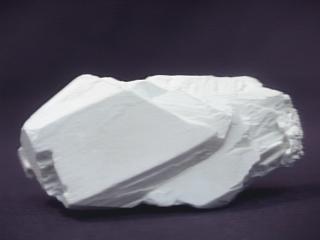 BORAX
BORAX
- Chemistry: Na2B4O7 -10H2O, Hydrated sodium borate.
- Class: Carbonates
- Subclass: Borates
- Uses: an ore of boron and as a source of borax (a cleaning agent and useful industrial chemical)
Specimens
Borax is directly deposited in arid regions from the evaporation of water in intermittent lakes called playas. The playas form only during rainy seasons due to runoff from adjacent mountains. The runoff is rich in the element boron and is highly concentrated by evaporation in the arid climate. Eventually the concentration is so great that crystals of borax and other boron minerals form.
PHYSICAL CHARACTERISTICS:
- Color is white to clear.
- Luster is vitreous.
- Transparency crystals are transparent to translucent.
- Crystal System is monoclinic; 2/m
- Crystal Habits include the blocky to prismatic crystals with a nearly square cross section. Also massive and as crusts.
- Cleavage is perfect in one direction.
- Fracture is conchoidal.
- Hardness is 2 - 2.5
- Specific Gravity is approximately 1.7 (very light)
- Streak is white.
- Associated Minerals are calcite, halite, hanksite, colemanite, ulexite and other borates.
- Other Characteristics: a sweet alkaline taste, alters to chalky white tincalconite with dehydration.
- Notable Occurrences include Trona, Boron, Death Valley and other California localities; Andes Mountains; Turkey and Tibet.
- Best Field Indicators are crystal habit, color, associations, locality, density and hardness.


